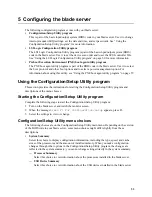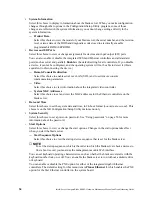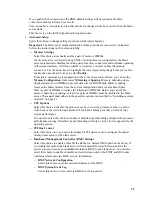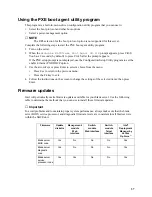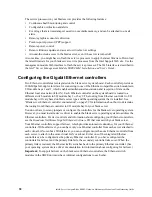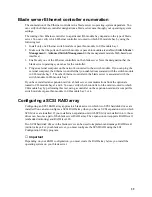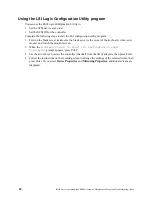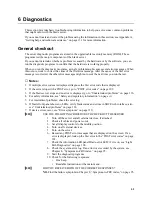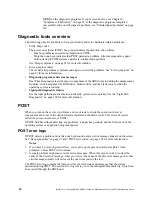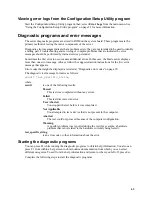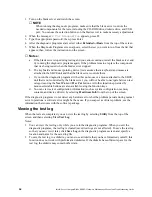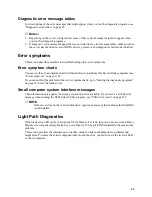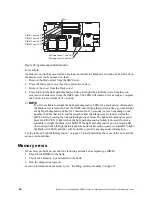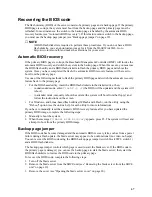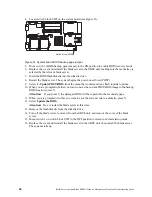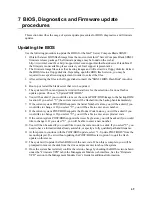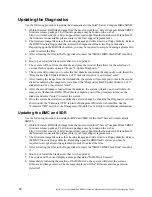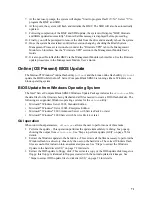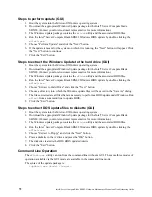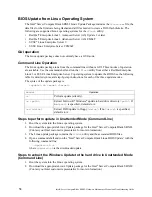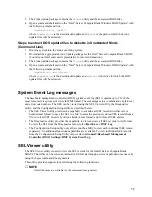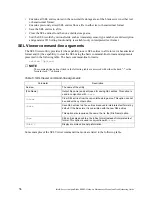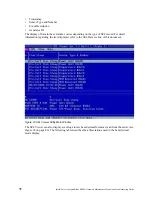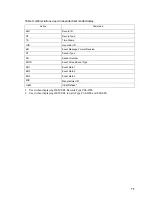
67
Recovering the BIOS code
The flash memory (BIOS) of the server consists of a primary page and a backup page. If the primary
BIOS page is corrupt, the system must boot from the backup page and the primary page must be
reflashed. In most instances, the switch to the backup page is handled by the automatic BIOS
recovery feature (see “Automatic BIOS recovery”). If this feature cannot switch to the backup page,
you must use the backup page jumper (see “Backup page jumper” on page 67).
✏
NOTE
A BIOS flash diskette is required to perform these procedures. If you do not have a BIOS
flash diskette, you can download an image for it from the World Wide Web. Go to
http://www.intel.com/ibl and make the selections for your server.
Automatic BIOS recovery
If the primary BIOS page is corrupt, the Baseboard Management Controller (BMC) will invoke the
automatic BIOS recovery and switch the system to the backup page. When this occurs, you must use
the BIOS flash utility and a BIOS flash diskette to flash the primary BIOS page and reboot the
system. Once you have completed the flash, the automatic BIOS recovery feature will be reset to
boot from the primary page.
Use one of the following methods to flash the primary BIOS page and switch the automatic recovery
feature back to the primary page:
•
For the DOS-based utility, insert the BIOS flash diskette in the diskette drive; then,
— in unattended mode, enter:
flash2 /u /r
(the BIOS will be updated and the system will
reboot).
— in attended mode, manually reboot the system (the system will boot from the floppy) and
follow the instructions on the screen.
•
For Windows- and Linux-based flash utilities (WFlash and LFlash), run the utility using the
"Reboot" option (see the on-line help for each utility for more information).
If you have to manually reset the automatic BIOS recovery feature after you have updated the
primary BIOS image, complete the following steps:
1. Manually reboot the system.
2. When the message
F3 Reset BIOS Recovery
appears, press F3. The system will reset and
attempt to boot from the primary BIOS image.
Backup page jumper
If the BIOS code has become damaged and the automatic BIOS recovery fails, such as from a power
failure during a flash update, the blade server may appear to be nonfunctional (no video, no beeps).
You can recover the BIOS code using the BIOS backup page jumper (switch block SW2, switch 1)
and a BIOS flash diskette.
The backup page jumper controls which page is used to start the blade server. If the BIOS code in
the primary page is damaged, you can use the backup page to start the blade server; then, start the
BIOS flash diskette to restore the BIOS code to the primary page.
To recover the BIOS code, complete the following steps:
1. Turn off the blade server.
2. Remove the blade server from the SBCE unit (see “Removing the blade server from the SBCE
unit” on page 19).
3. Remove the cover (see “Opening the blade server cover” on page 20).
Содержание 8832L1X
Страница 62: ...46 Intel Server Compute Blade SBX82 Hardware Maintenance Manual and Troubleshooting Guide...
Страница 148: ...132 Intel Server Compute Blade SBX82 Hardware Maintenance Manual and Troubleshooting Guide...
Страница 154: ...138 Intel Server Compute Blade SBX82 Hardware Maintenance Manual and Troubleshooting Guide...

